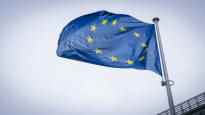BRUSSELS A manipulated image of a politician knitting during a session of the European Parliament appears on the computer screen.
The picture spreads quickly on social media. The captions claim that Central Europe is suffering from cold and hunger because the Russians turned off their gas taps.
Social media accounts hiding behind nicknames are about Russia. Some knowingly and possibly paid. Some as local actors who, either out of rebellion or sheer ignorance, share the lies of the troll factories on their own channels.
The storm coincides with the negotiations on Russian gas and the explosions of the Nordstream gas pipelines. At the same time, Russia is also destroying Ukraine with missiles.
This entity is an example of a hybrid threat. A key part of that is spreading disinformation. Fighting it has been practiced this week in the EU quarters in Brussels.
Energy and food crisis as Russia’s goals
The convener of the exercise was the European Center of Competence for Combating Hybrid Threats, Hybrid CoE, i.e. Hybrid Center, headquartered in Helsinki. There were five national teams from different parts of Europe as well as EU and NATO representatives.
The teams combating disinformation included experts from the public sector as well as private operators from various fields of security, information technology and communication.
– I spend a lot of time online at work and in my free time, and I often wonder why the public sector does things the way it does. Now it’s really a case when you have to think about it from their point of view, van der Bruggen laughed.
The imaginary troll factory set up for the exercise was led by an expert from the Hybridikeskus Jakub Kalensky. According to him, Russian disinformation attacks can be expected to increase during the winter.
It is estimated that Russia is trying to create an energy crisis and a food crisis in the world by disrupting Ukraine’s grain transport both at sea and in space.
Russia and Ukraine together produce 30 percent of the world’s wheat and 75 percent of sunflower oil. Several tens of millions of people in Africa (you switch to another service) is in danger of drifting into famine if their exports stop.
The means are the same, but the number has increased
According to Kalenský, the means used by Russia during the war in Ukraine have been largely the same as before.
– The messages belittle Ukraine’s right to even exist. Thus, they seek to justify the Russian attack. War crimes are allegedly committed by others. The narrative is largely the same as in 2014, says Kalenský.
What’s new has been not only the larger number of messages than before, but also the more versatile use of different channels. Trolls seem to use Facebook and Twitter less than before and move to other social media platforms.
According to Kalenský, between 2015 and 2017, Russia spent an estimated 1.5 billion dollars on its disinformation and hybrid operations.
It was only around that time that the EU began to systematically combat that false information. In recent years, NATO has also started investing in the issue.
– Fortunately, Europe has understood how serious this issue is, says Kalenský.
Conspiracy theories led to information chaos
Editor-in-chief of Radio Free Europe, funded by the US administration Jamie Fly rejects false information spread by Russia on a daily basis in his work. According to Fly, it has an amazingly good growth platform in the coverage area of his radio station in Eastern and Central Europe.
For example for a survey conducted in Slovakia last spring (you will switch to another service) the greater part of the respondents considered NATO and the United States, rather than Russia, to be to blame for the crisis in Ukraine. Slovakia and Ukraine are border neighbors.
Also in Hungary, Romania and Bulgaria, the opinion of the people about the events in Ukraine differs from, for example, the opinion of the Finns.
According to Fly, this is directly related not only to Russian disinformation, but also to the deterioration of general press freedom and, on the other hand, to the wildly growing media markets in those countries.
– There are plenty of options available to the public, people have a huge amount of information at their fingertips. This flood creates an opportunity for the Russians and other authoritarian actors to claim that nothing is worth believing because everyone is lying. It leads to conspiracy theories and a state I would call information chaos, Fly describes.
“Then let’s all knit sweaters”
The head of the hybrid center’s training activities Shiho Rybsky believes that this chaos can only be combated by seeking a deep understanding of the senders of misinformation, their motives and goals.
– The most difficult task is creating a snapshot. Understanding the adversary’s goals, i.e. what really makes them carry out harmful communication campaigns, says Rybski.
This is the kind of thinking Jet van der Bruggen did with his team in the training session in Brussels. In response to social media messages featuring a knitting MEP, they ended up with a strategy in which trolls who spread disinformation were not completely countered.
They decided to start creating the opposite, positive social phenomenon of knitting a sweater. The group invited European politicians to join the “we knit a sweater” campaign, which they hoped would spread to other European countries as well.
You can discuss the topic until Sunday, 4.12. until 11 p.m.
